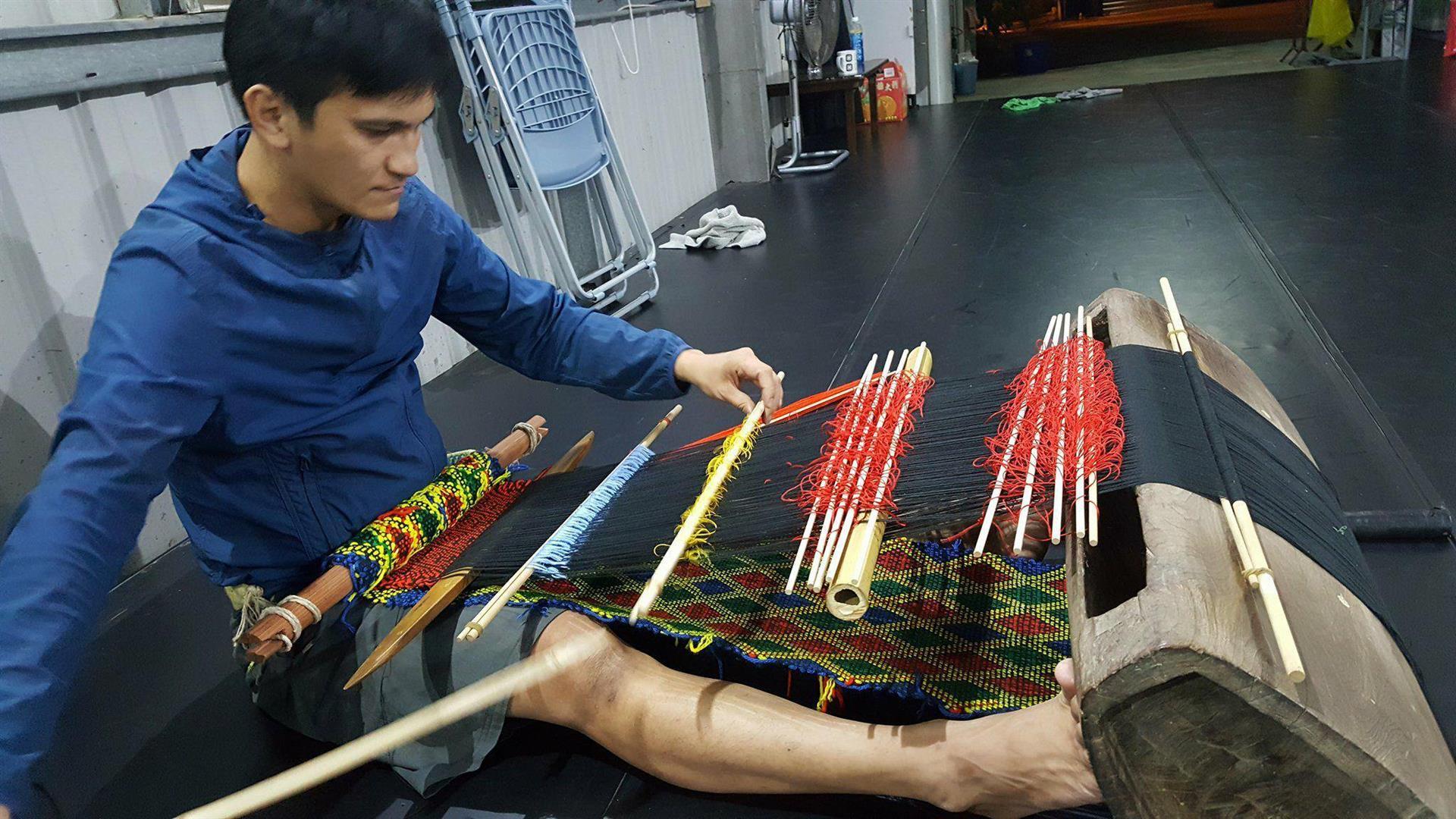Watan Tusi, a Weaving Man
2017/11/28
Written by Tsou, Shin-ning
 Watan Tusi
Photo by 鄒欣寧
Watan Tusi
Photo by 鄒欣寧
Is it strange to see a man weaving? This question seems to be outdated at the times of gender equality, especially when male designers’ as APu Jan and Jason Wu had their success in fashion business. If you think so, I am afraid that you take indigenous peoples’ traditional taboos too lightly as I do.
According to Truku tradition, Gaya, refers to ancestor’s preaching or taboo, lies in gender division of labor is restricted for Truku people. Men go hunt and women do weave. If a man wants to be an artist, the choices would be craft arts as stone carving. In the light of the Elder’s sayings, if a man touched the weaving machine, he would not be blessed by the ancient spirits and cross the rainbow bridge after death.
However, Watan has much more interests in weaving than hunting. He found an old weaving machine at home which was left by Payi. Yet there were no women knowing how to operate it. Watan took the machine and started learning by himself.
He must be a very talented weaver because he learned those almost-lost skills quickly. As time goes by, he does not only weave at home but also at the breaks of rehearsals. There are weaving machines in multiple size and models at rehearsal space of TAI Body Theatre for Watan and dancers’ use at their availabilities.
2017 was a very particular year for both Watan and his dance company. To be more accurate, they were super busy in that year. In the past, they create one new piece and tour the old ones every year. In the rest of the time, they return to village for study and research. It may not pay well but Watan and his dancers never complain. They have their own pace, much more calm and easy than their colleagues in Taipei. I visit them from time to time, always admire their ways of working and living.
No matter how busy he is, Watan always finds his way back to weaving machine. He would fasten his wahug (belt), step on the Ubung (warp beam) with both feet, put gikus (shuttle) and bgiya (beating bar) in the organized warp then embed bung bung (weft) in textile. He quietly concentrates on making this picture of sounds. They are sounds of ancient spirits, past Truku people, the current and Watan Tusi.
I consider weaving is a ritual for Watan at rehearsal space. Though he makes actual costumes for performances or the traditional wedding dress for his sister. Weaving is undoubtedly important to him. It’s not only for the making of Dowriq Utux Rudan, a diamond shape totem for their work Weaving in 2016, but also the inspiration for his dance works. The weaving techniques are recorded with numbers as codes on papers. Watan transforms the needles to beats, collocating with the food notation for dance which he generalizes from traditional dances to make millions of variation of basic steps.
I’m impressed by Watan’s idea of transforming the space on weaving machine to the time of body movement. Creating a new physical language out of ancient tradition makes it very precious and special. The abstract aesthetics is refined from a lot of exercise. Performers acknowledge the history through movement. The contemporary pieces and ancient tradition share the same root, and co-exist at the same time.
-
 《尋,山裡的祖居所》, TAI Body Theatre.
Photo Provided by TAI Body Theatre
《尋,山裡的祖居所》, TAI Body Theatre.
Photo Provided by TAI Body Theatre
-
 《織布》, TAI Body Theatre
Photo Provided by TAI Body Theatre
《織布》, TAI Body Theatre
Photo Provided by TAI Body Theatre
-
 《織布》, TAI Body Theatre
Photo Provided by TAI Body Theatre
《織布》, TAI Body Theatre
Photo Provided by TAI Body Theatre
-
 《久酒之香》, TAI Body Theatre
Photo Provided by TAI Body Theatre
《久酒之香》, TAI Body Theatre
Photo Provided by TAI Body Theatre
-
 《久酒之香》, TAI Body Theatre
Photo Provided by TAI Body Theatre
《久酒之香》, TAI Body Theatre
Photo Provided by TAI Body Theatre
It reminds me of that Watan showed me a clip of video with a mysterious smile the other day. There was a group of ladies watching him sitting in front of a weaving machine, working on shuttle and beating bar. The Payi were talking in Truku language out of excitement as hearing the familiar sound of bung bung. ‘The elders say they have not heard this for a long time.’ Watan told me. That was also the first time he did weaving in front of his people. He was on pins and needles but surprised to receive such positive response from the elders.
Watan told me, after a long time, weaving is his way to subtly suggest his sexual orientation to his family and friends. It turns out on that day, in the video, Watan and his weaving machine already deftly crossed the boundary on his peoples’ gaze and reconnected the world where Gaya is.
-
 Photo by 林源祥
Photo by 林源祥
-
 Photo by 林源祥
Photo by 林源祥